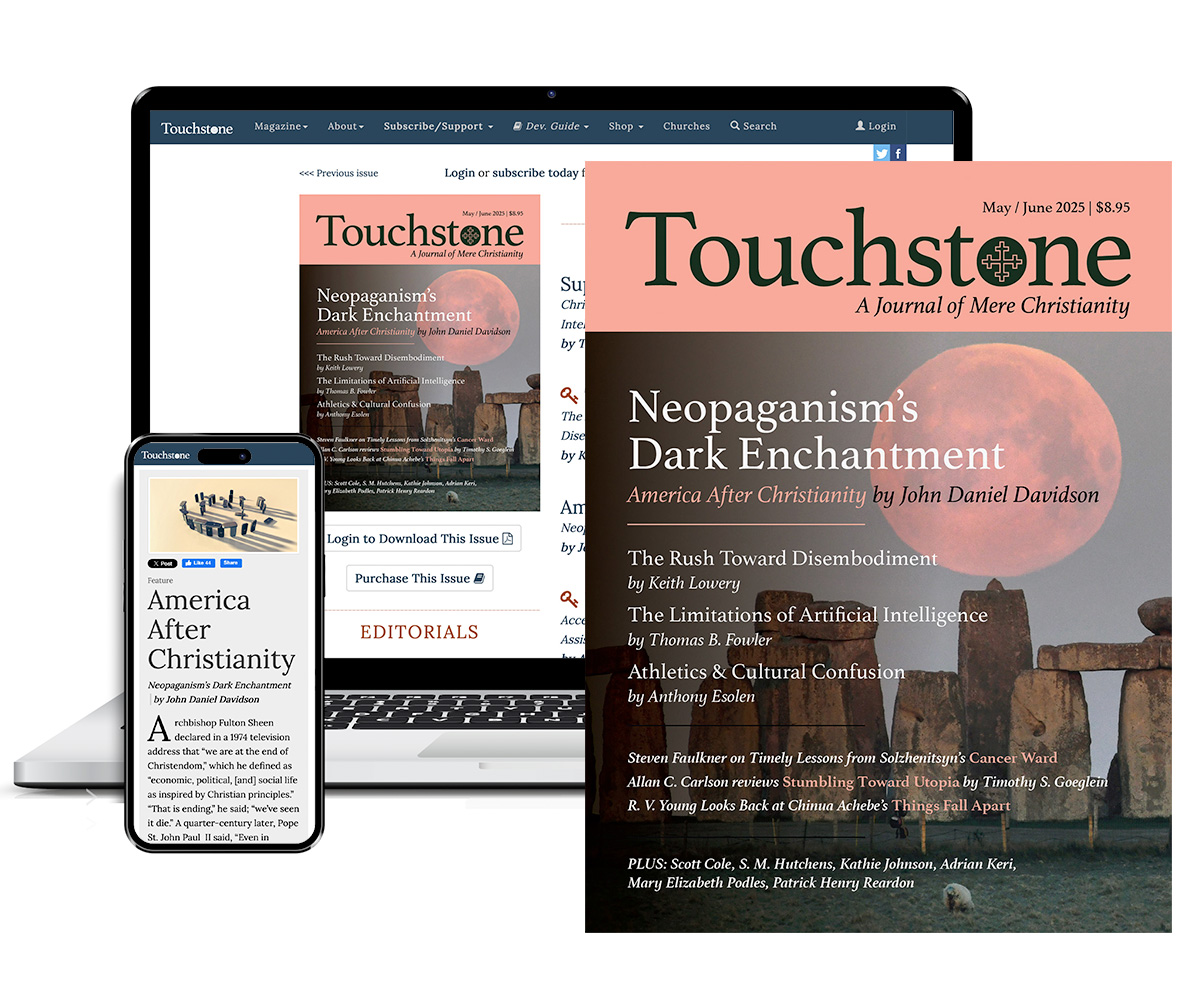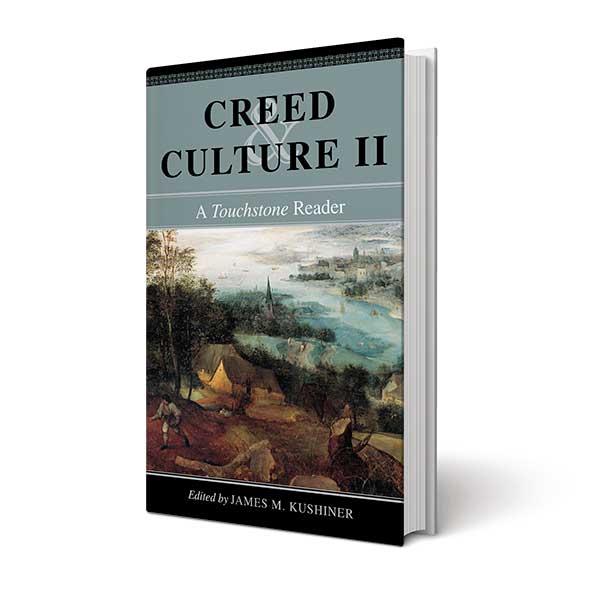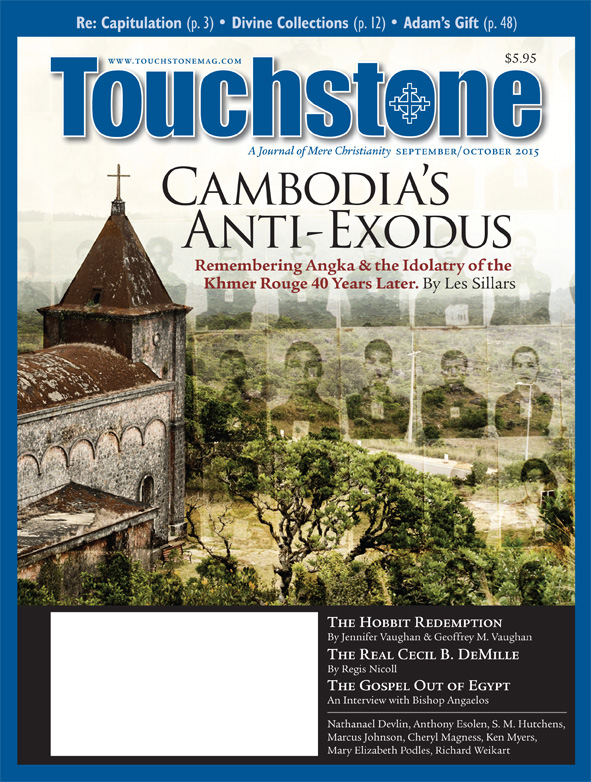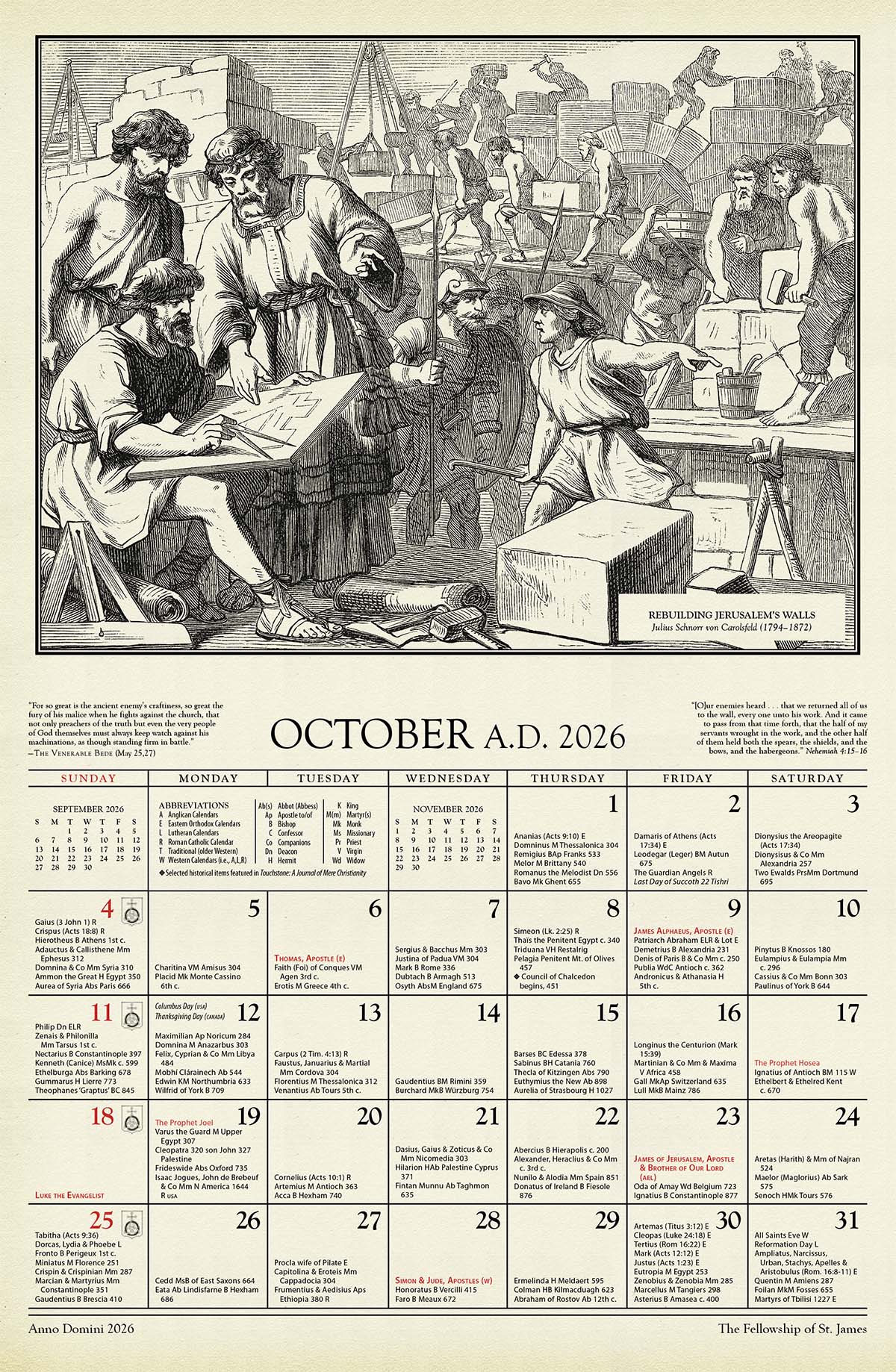Feature
Scandals, Sandals & Biblical Epics
The Dramatic Life, Faith & Films of Cecil B. DeMille
In case you haven't noticed, Tinseltown is turning out biblical films on a scale not seen since the 1950s. With the showings of Noah, Heaven Is for Real, Son of God, God's Not Dead, Left Behind, Exodus, and Mary, Mother of Christ, 2014 has been called the "year of the biblical movie." It is a genre and trend traceable to the cinematic influence of Cecil B. DeMille.
Box office hits like Quo Vadis (1951), The Robe (1953), and Ben-Hur (1959) made the fifties a golden era for the biblical epic. But it was DeMille's Samson and Delilah, the number-one moneymaking movie of 1949, that launched the era, and his Ten Commandments (1956) influenced filmmaking well into the next decade, which saw the release of The Story of Ruth (1960), King of Kings (1961), and The Greatest Story Ever Told (1965).
A Filmmaker's Filmmaker
Arguably the most successful filmmaker of his time, Cecil B. DeMille made over seventy movies in a forty-year career that began long before the "talkies."
Wearing his signature outfit of jodhpurs, knee boots, riding crop, and sometimes side arm (for snake protection, he claimed), C. B., as he was known in the industry, directed "casts of thousands" on elaborate sets that were trendsetting for their authenticity and grandiose scale.
Because he began in the early days of motion pictures, over fifty of DeMille's films are silent, and nearly sixty are "pre-code" (i.e., pre-1934). Fans who remember him for his biblical epics may be surprised to learn that many of his pre-code films contain much that is salacious and anachronistic. Even Sign of the Cross (1932), a love story set in the early Christian era, includes nudity, sexual images, and an orgy complete with a lesbian dance.
DeMille made the first of his seven religious-themed films in 1920. Something to Think About starred Gloria Swanson as a woman who, through the religious faith of a housekeeper, is motivated to honor a promise she made to a handicapped suitor. His last religious film, The Ten Commandments, was the most spectacular, most critically acclaimed, and highest-grossing picture of his long, illustrious career.
A filmmaker's filmmaker, DeMille's body of work is a testament to his ambition, creativity, and skill. But it is also evidence—or, perhaps, a product—of a certain tension between the faith he professed and the life he lived.
Spiritual Formation
In his book, Cecil B. DeMille—A Biography of the Most Successful Film Maker of Them All, film critic and biographer Charles Higham peels back the -Barnum-esque patina of his subject to reveal a man of uncommon complexity. Higham had access to all of the filmmaker's correspondence, notebooks, and other historical documents—courtesy of DeMille's daughter, Cecilia Harper—and conducted interviews with dozens of friends and colleagues. What he found was that under the skin of egotism, arrogance, and ruthless self-promotion was "a devout believer in the Bible who saw himself in a missionary role, making the Scriptures attractive and fascinating to the masses in an age of increasing materialism and heathenism."
That interior framework was formed very early in DeMille's life. Each night, Henry DeMille, a lay Episcopal pastor, read a chapter from the Old and New Testaments to his sons Cecil and William. Through his father's teaching and influence, Cecil had, by age ten, developed a devotion to the Bible that stayed with him throughout his life.
After his father died, Cecil, then fifteen, began learning the finer points of Scripture at a military school headed by a staunch Christian. But it was during the early years of his marriage that his faith was tested and forged. Married to Constance Adams in 1902, he began his career as a stage actor and playwright. But the unsteady, meager income was insufficient to keep him, his wife, and their daughter Cecilia out of grinding poverty. For ten years they scraped by with threadbare clothes, worn-out shoes, watered-down soup, and a broken typewriter. For consolation, Higham writes, DeMille turned to "religion and Doré," the latter a collection of iconic illustrations of Bible texts by the nineteenth-century artist Gustave Doré, which Cecil had pored over as a young boy.
Then, in 1913, things began to improve for the DeMille family.
Liaisons
At lunch one afternoon, Cecil pitched a project proposal to his script-writing partner, Jesse Lasky. Unimpressed, Lasky countered with a proposal of his own: they should make a movie. No sooner did C. B. respond, "Let's!" than the two set to work on their first picture, The Squaw Man (1913), followed by The Virginian (1914) and The Call of the North (1914). All three films were successful, and DeMille began turning out movies at a blistering pace, with five more in 1914 and thirteen (!) in 1915. Financially, Cecil and his family were on the road to recovery, but relationally, they had hit an impasse.
As Higham tells it, Constance had withdrawn "primly from the marriage bed." The move may have had something to do with Jeanie Macpherson, a beautiful actress and talented writer whom DeMille hired and became romantically entangled with. Professionally, the liaison continued until her death in 1946; sexually, it lasted until 1917, when Cecil became smitten with another actress, Julia Faye. Hired to star in The Woman God Forgot (1917), Faye became DeMille's backstreet mistress, and Macpherson's rival, for the next dozen or so years.
During this time, DeMille made a flurry of pre-code films with some telling titles: Old Wives for New (1918), Don't Change Your Husband (1918), For Better, For Worse (1919), and Why Change Your Wife? (1919). Each had the pre-code requisites of sex, adultery, infidelity, and "bathrooms"—industry code for scenes with people in various states of dress and undress. Considering what was going on inside and outside the filmmaker's home, the titles suggest that something was going on inside him, as well.
Conflicts
The twenties roared in with several soaring scandals in Hollywood: the Fatty Arbuckle case of alleged rape and manslaughter, the murder of director Desmond Taylor, the fatal drug overdose of actor Wallace Reid, and the highly publicized affair between Gloria Swanson (married at the time to a successful restaurateur) and director Marshall Neilan. Hitherto concealed from the public eye, the dark underbelly of the movie industry—sex, drugs, booze, and hedonism—was now exposed. Troubled over the moral character of Hollywood and, perhaps, by his own contribution to it, DeMille undertook three things.
In 1922, he helped establish a watchdog organization, the Motion Picture Producers and Distributors of America, headed by Will H. Hays, to vet films for a "clean moral tone." Hays went on to formulate a set of guidelines for the industry, which would become known as the Production Code or, more popularly, the Hays Code.
Also in 1922, DeMille made Manslaughter, a morality tale about a "jazz-mad" girl who causes the death of a police officer by her reckless driving. Film taglines, like "Is the modern world racing to ruin on a wave of jazz and cocktails?", were intended to arouse the concerned and titillate the curious. In an industry where Mammon rules, even morality tales have to make money, and nothing turns a dollar better than debauchery.
Then, the following year, C. B. began work on the first version of what would become his most famous and beloved picture.
The Ten Commandments
Originating from movie ideas submitted by readers of the Los Angeles Times, The Ten Commandments (1923) would become the first of DeMille's biblical epics. Unlike the 1956 version, the original Ten Commandments centered on the intrigues of four modern characters: John, a commandment keeper; his brother Dan, a commandment breaker; their mother, a moral legalist; and Mary, a mutual love interest.
To introduce the story, DeMille included a prologue, based on the Book of Exodus, to provide context for the moral allegory. As scriptwriter Jeanie Macpherson put it, "As the sins of Pharaoh . . . are avenged by the down-crashing of the Red Sea . . . so does the emotional Red Sea engulf our modern Dan McTavish, who has attempted to raise his puny voice against immutable laws."
Once the project moved from scripting to shooting, DeMille took to production with the religious fervor of a medieval abbot presiding over a monastery. Taking on the role of spiritual director for cast and crew, he sent a Bible to every person on the payroll, along with the instruction, "The Bible should never be away from you. Place it on your desk, and when you travel, stick it in your briefcase. Make reading it a daily habit."
And it wasn't just the interior life of his cast and crew that he sought to regulate. Higham writes that on location,
the moral life of the camp was rigorously prim and proper. A large police and police matron corps patrolled the separate camps, no man being permitted into the female section and vice versa (wives and husbands of married camp members had been left firmly at home). Prohibition laws were rigorously observed and bootleggers and professional gamblers driven out by DeMille's special police.
(Hard for a modern mind to grasp in a day when a Catholic filmmaker is sneered at for offering daily Mass on the set of a movie depicting Christ's passion.)
The film involved 2,500 actors and extras, 4,500 animals, 250 chariots, sets, and wardrobes, all painstakingly researched for period-appropriateness, and ground-breaking special effects. The Ten Commandments was the first motion picture to have a budget exceeding $1 million, the final tab totaling over $1.5 million.
Critically, reviewers were tepid on the main story, but complimentary on the prologue for its scope, grandeur, and cutting-edge effects. As for the public, they loved the picture, making it a phenomenal box-office success that held the revenue record for Paramount for the next twenty-five years, until it was broken by another DeMille film, Samson and Delilah (1949).
Over the next two years DeMille made a string of middling pictures deserving little more than a footnote in his filmography. Then, in 1926, he started work on his next biblical epic.
The Life of Christ
The King of Kings (1926) originated from a promise DeMille had made to a wealthy and deeply religious financial backer who wanted the life of Christ depicted on celluloid. C. B. began the project much as he had The Ten Commandments: he gave head scriptwriter Macpherson the Bible his father had preached from, instructing her to follow it "to the letter"; he sent Bibles to every staff member with orders to "memorize every word of the Gospels" and to attend his daily Bible lesson; and he added a contractual stipulation to the actress playing the Virgin Mary that she "regulate her personal life that no blemish of character may eventuate."
As for the personal life of the "abbot," DeMille spent weekends on his yacht with Julia Faye, much to the irritation of Macpherson, his former lover. Other off-hours could find him "relaxing" in the company of Gladys Rosson, his administrative secretary.
Like The Ten Commandments, The King of Kings opened to a mixed press and an adoring public. But unlike Commandments, the financial profit for King was marginal. That was owing to a combination of factors: the film's $2 million price tag; local censorship over scenes suggesting something of a more personal relationship between Jesus and Mary Magdalene; and criticism by some Jewish audiences for perceived anti-Semitism in the film.
The "Sequel"
Six years later, DeMille made The Sign of the Cross (1932). Although some cinephiles call it a sequel to King, Christianity serves only as a distant backdrop to a love story between a Roman soldier and a Christian slave girl during the reign of Nero.
At this time in his career, DeMille was less concerned with biblical literalness, historical accuracy, and even artistic flair than he had been in his previous films. With the studios reeling from the financial pressures brought on by the Depression, turning a profit became his primary aim. Having learned the cash value of sex and salaciousness from his pre-code movies, he made sure that Sign had its fair share of censor bait, allowing the biblical content of the film to assuage any moral misgivings he may have had with scenes involving sadism, erotic dances, bacchanalian partying, overtly sexual images, and homosexual insinuations.
Placing romance and erotica against a historical background proved a winning formula at the box office. That, combined with a modest (by DeMille standards) production cost of $650,000, made Cross an overwhelming success, establishing DeMille as a filmmaker the industry couldn't ignore. It also put the enforcement of the Hays Code on the fast track and sparked the formation of the Catholic Legion of Decency, a private moral watchdog of the motion picture industry.
But, undaunted by the moral police, DeMille applied the same formula to Cleopatra (1934) and The Crusades (1935), flouting the code that he helped initiate.
Turns
Nevertheless, at around this time, the mid-1930s, De-Mille's attentions took something of a turn. Whether the impetus was his approaching sixty years of age, seeing his children grown and getting married, becoming a grandfather, or experiencing nostalgia at the sight of a painting of his childhood home, he began re--domesticating—spending more time at home, rekindling his relationship with Constance, and allowing Julia Faye to drift out of his life. During World War II, he shifted his considerable energies and organizational skills to the war effort, serving as an air raid warden, chairman of the Red Cross blood donor program, and a broadcaster and frequent speaker for the cause of the Allies.
In 1946, profoundly affected by the death of his one-time lover and longtime writing partner, Jeanie Macpherson, he "turned more and more to his old consolation of religion, frequently reading the Bible to Constance in the late hours . . . or leafing through the well-worn book of Doré illustrations to the Bible which he had loved at his father's knee."
In the emotional aftermath, following a nearly two-decade hiatus from biblical films, he returned to the genre with Samson and Delilah (1949).
He had actually planned to make Samson in 1935, but had shelved it due to the disappointing success of Crusades, a sign he took as indicative of changing public tastes. He had then shifted to American themes for his next several movies, but in 1948, he dusted off Samson and began revising the original treatment.
While studios heads doubted the public appetite for a biblical story in the midst of the international tensions of the Cold War, DeMille was confident that, with the right touch—playing up the rich sexual insinuations in the biblical story—the film would be a commercial success. The release of the picture proved his instincts to be correct, for Samson became the top-grossing film of 1950 and received two Academy Awards out of five Oscar nominations.
In 1953, the death of another past paramour, Gladys Rosson, DeMille's secretary of many years, prompted Cecil, then in his early seventies, to do some serious self-examination: What was the worth of the things he had done? What were the regrets of things undone? And what thing could he do to secure his place in the firmament of filmmaking?
Commandments Redux
For some time, DeMille had been nursing a desire to remake The Ten Commandments—only this time on location, in Egypt. Now at the apex of his career, he was confident that by bringing to bear the full weight of the clout and experience he had gained, and by taking advantage of the numerous advances made in technology and cinematography since 1923, he could make a movie that, artistically and financially, would seal his legacy.
Unlike the original film, the 1956 version focused exclusively on the story of the Exodus, emphasizing the dynamics between Moses and Ramses II. With a virtual blank check at his disposal for the project, DeMille assembled a slate of A-list actors for his main cast, supplemented them with 12,000 extras and 15,000 animals, and brought together a special effects team that earned the picture an Oscar.
Though 74 years old, DeMille himself oversaw the construction of elaborate sets that were -breathtaking in both their scale and detail. It was on the top of one of those sets, after climbing a hundred-foot ladder, that he experienced a heart attack. In excruciating pain, not knowing how he would get down, he began praying in earnest, then started to descend in slow, measured steps. When he reached the bottom, he dropped into a seated position. That night in his bedroom, desiring more than anything to complete the movie, he "prayed as he had never prayed before," writes Higham.
When morning dawned, DeMille arose from his bed, stood up, and let out a cry, sensing that he had been graced with a reprieve. He returned to work to finish what he had set out to do: make a film that would be his crowning achievement.
The Ten Commandments was the top box-office hit of the year and the second-highest moneymaker of the decade, behind Ben-Hur (1959). It garnered seven Academy Award nominations, winning one, and is considered by many critics as the quintessential film in the genre of the biblical epic. The movie's popularity even extended to heads of state: in addition to the many other honors awarded the film and its creator, DeMille was received by Pope Pius XII, Queen Elizabeth, and Winston
Churchill.
The following year, while working on yet another film, DeMille suffered two more heart attacks, the latter a fatal one. On the morning of his death, a note in his handwriting was found at his bedside:
The Lord giveth and the Lord taketh away. Blessed be the name of the Lord. It can only be a short time . . . until those words, the first in the Episcopal funeral services, are spoken over me. . . . After those words are spoken, what am I? I am only what I have accomplished. How much good have I spread? How much evil have I spread? For whatever I am a moment after death—a spirit, a soul, a bodiless mind—I shall have to look back and forward, for I have to take with me both.
Such was the calculus of a man whose own epic depicted the tensions between the evil of his personal misdeeds and the good of his public moralizing, between the amorality of his pre-code films and the morality of his religious ones, and between the suggestive content of his biblical epics and their inspirational values.
As the curtain was lowered and the footlights dimmed, one can imagine the dying mogul turning one last time to the Doré illustrations that had consoled him from childhood. This time, whether he drew comfort from them or fear, we may never know. •
Regis Nicoll is a retired nuclear engineer and physicist who is a Colson Center Fellow and Christian commentator. He currently writes for BreakPoint, Crosswalk, and Salvo magazine, and serves as the lay pastor of an Anglican church plant in Chattanooga (www.hamiltonaf.org).
Share this article with non-subscribers:
https://www.touchstonemag.com/archives/article.php?id=28-05-036-f&readcode=3357
subscription options
Order
Print/Online Subscription

Get six issues (one year) of Touchstone PLUS full online access including pdf downloads for only $39.95. That's only $3.34 per month!
Order
Online Only
Subscription

Get a one-year full-access subscription to the Touchstone online archives for only $19.95. That's only $1.66 per month!
bulk subscriptions
Order Touchstone subscriptions in bulk and save $10 per sub! Each subscription includes 6 issues of Touchstone plus full online access to touchstonemag.com—including archives, videos, and pdf downloads of recent issues for only $29.95 each! Great for churches or study groups.
Transactions will be processed on a secure server.
more from the online archives
calling all readers
Please Donate
"There are magazines worth reading but few worth saving . . . Touchstone is just such a magazine."
—Alice von Hildebrand
"Here we do not concede one square millimeter of territory to falsehood, folly, contemporary sentimentality, or fashion. We speak the truth, and let God be our judge. . . . Touchstone is the one committedly Christian conservative journal."
—Anthony Esolen, Touchstone senior editor










